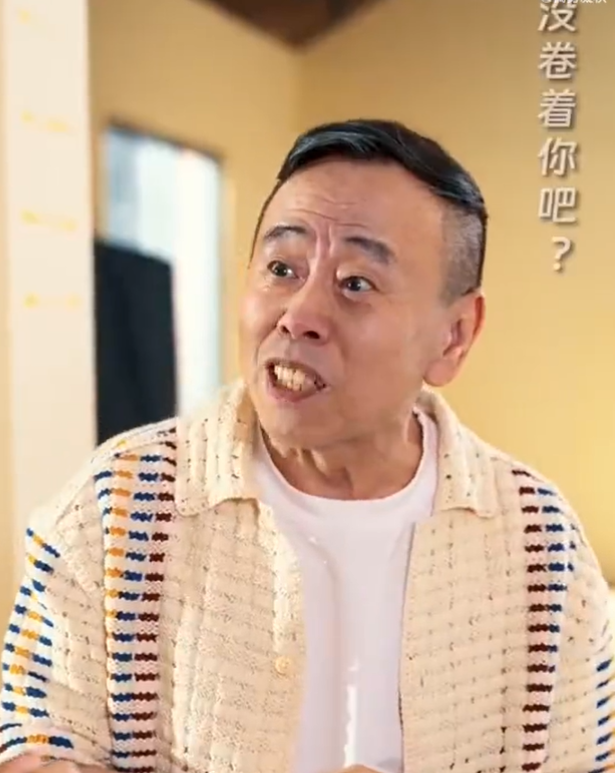

“Creating long series with a short drama mindset” has become a notable trend in the industry this year. In some long series, the classic narrative structures and foreshadowing are overshadowed by an oppressive pre-climax, frequent twists, and memorable lines. Under the creative concepts of “fast,” “harsh,” and “thrilling,” the storytelling becomes less nuanced, with a reduction in intricate descriptions, favoring instead intense conflicts and vigorous expressions. As the pace of the plot accelerates, some works exhibit narrative confusion that struggles to justify itself, leaving viewers feeling tense and stimulated while watching, yet empty and unfulfilled afterward—let alone providing a rich, lingering experience.
Some scholars suggest that this creative inclination is related to the current societal context, characterized by societal acceleration that shapes the shared environment of creators and audiences today. According to German sociologist Hartmut Rosa, the “digital revolution” occurring since the 1990s in the field of communication technology has triggered social acceleration, resulting in a direct change in the structure of social “time.” Especially with the rise of mobile internet, people enjoy the convenience and efficiency of online life but also face the pressure of ever-quickening life rhythms. When viewers bring this accelerated experience into their film and television appreciation, they often wish to grasp a complete story in a short time, lacking the patience to explore the intricate layers behind the narrative and unconsciously demanding a rapid progression of the plot. They even view high plot density and frequent twists as standards for selecting works. The rapid development of short dramas has only intensified this shift in aesthetic preferences since their episodes typically do not exceed 10 minutes, with some even being less than 60 seconds. To quickly capture attention within such a brief duration, some creators resort to formulaic plots that rapidly stimulate the senses and emotions, such as the tale of a handsome, wealthy, yet temperamental CEO who seems charming but is exclusively devoted to an ordinary female lead, or stories of overcoming obstacles and achieving peaks in life through a “protagonist halo,” which cultivates a demand for extreme gratification among viewers.
Extreme gratification implies rapid emotional shifts and intense emotional conflicts. Some long series, to cater to the audience's craving for this extreme experience, pile on conflict elements and concoct bizarre plots, deliberately creating simplistic opposing relationships between characters based on their backgrounds, class, or region, replacing warm, sincere, intricate emotional expressions with confrontations and quarrels that, though seemingly more efficient, fail to resolve complex, layered emotional conflicts, making the story difficult to justify and failing to form a complete logical loop. Some long series depict flat or even stereotyped character representations, constructing dramatic yet unrealistic relational dynamics where emotions are established based on superficial conditions, only to disband at the first sign of imperfection in another. Characters come and go like a revolving door, with many reduced to mere “tool people,” lacking sufficient emotional motivation and behavioral logic. The relationships between characters also lack deep emotional connections built on interaction and influence, not only failing to offer a profound reflection on real-world interpersonal relationships, but also potentially fostering animosity, escalating conflicts, and creating discord.
Long-form series have the responsibility to guide audiences in focusing on a warm, tangible world, experiencing the genuine interactions between individuals, their time, and society. In the era of “attention economy,” long series should not drift with the current, following the creative mindset of short dramas; rather, they should enhance content quality further, carve out differentiated creative paths, and provide audiences with high-quality, meaningful content. For instance, they could experiment with new narrative structures and techniques to optimize plot construction, using non-linear and multi-perspective storytelling to enhance innovation; explore diverse themes and genres to meet varied audience needs, avoiding content homogeneity and excessive reliance on IPs; leverage the advantages of extended audiovisual formats, boldly exploring time and space management to elevate the aesthetic experience of the series; and deeply excavate character traits, capturing language, actions, and details that align with their personas, crafting rich, relatable protagonists and developing relationships that reveal their inner worlds while highlighting complex social relations and conflicts, reflecting the complexities of societal realities and human nature. By adopting a rigorous creative attitude to establish a coherent narrative structure, clarifying the story’s cause-and-effect, and forging tight connections between the work and the audience's lives, creators can enrich viewers' perceptions of life with powerful emotional narratives. Only in this way can long series truly innovate while staying true to their narrative form and emotional expression.
(The author is an associate researcher at the School of Drama and Film at Communication University of China.)


